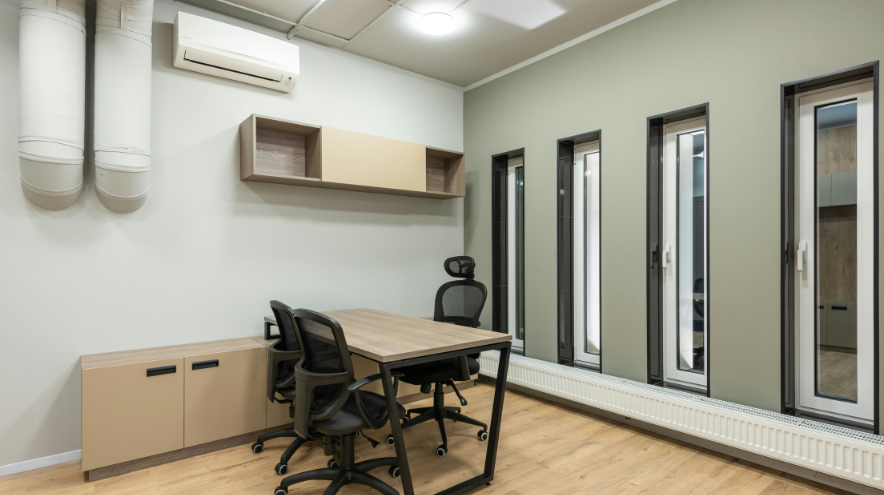Mindfulness Practices for Reducing Stress

Stress feels like it’s everywhere these days, doesn’t it? I’ve noticed how fast-paced life has become. It’s like we’re juggling a million things at once. That’s why mindfulness has become so important. Mindfulness for stress reduction isn’t just a trend—it’s a lifeline. It helps us slow down, breathe, and find balance.
Key Takeaways
Mindfulness helps you stay in the present and feel calmer. It teaches you to notice your thoughts and feelings without judging them.
Add easy mindfulness activities to your day, like breathing deeply or writing things you are thankful for. This can help your mind and mood.
Begin with small steps and practice mindfulness often. Use apps or tools to help you and make mindfulness a habit.
Understanding Mindfulness for Stress Reduction
What Is Mindfulness?
Mindfulness is all about being present. It’s about paying attention to what’s happening right now without judging it. I like to think of it as hitting the pause button on life. Instead of worrying about the future or replaying the past, mindfulness helps me focus on the here and now. It’s not about clearing your mind completely. It’s more about noticing your thoughts and emotions without getting caught up in them.
At its core, mindfulness teaches us to:
Embrace impermanence. Emotions come and go, and that’s okay.
Observe emotions without judgment. Accepting them as they are can feel freeing.
Respond thoughtfully instead of reacting impulsively.
Build emotional resilience. This helps me handle tough situations better.
How Mindfulness Reduces Stress
Stress often comes from feeling overwhelmed or out of control. Mindfulness helps me slow down and take a breath. When I practice mindfulness for stress reduction, I notice my body relaxes, and my mind feels clearer. It’s like giving myself a mental reset.
Mindfulness-based stress reduction (MBSR) is a proven method for managing stress, anxiety, and even depression. Studies show it lowers the body’s stress response, which can improve overall health. I’ve found that when I’m mindful, I can handle challenges with more patience and less frustration.
Benefits of Mindfulness Practices
In 2025, life feels busier than ever. Mindfulness has become a game-changer for me and many others. Here’s why:
It reduces rumination, which means fewer negative thoughts and less anxiety.
It lowers stress levels, as shown in countless studies.
Also It changes how we think about stress, making it easier to manage.
Mindfulness also boosts physical health. It can improve sleep, reduce heart disease risks, and even make us happier. For me, the biggest benefit is feeling more connected to the present moment. It’s like finding a little pocket of peace in a chaotic world.
Mindfulness Exercises to Reduce Stress

Deep Breathing Techniques
Deep breathing is one of my favorite mindfulness exercises. It’s simple, quick, and works wonders to reduce stress. I like to think of it as hitting the reset button for my mind and body. When I feel overwhelmed, I sit down, close my eyes, and focus on my breath. Here’s a quick guide I follow:
Sit comfortably or lie down.
Place one hand on your belly and the other on your chest.
Breathe in deeply through your nose, letting your belly rise.
Exhale slowly through your nose, feeling your belly fall.
Repeat this for a few minutes.
Research backs this up too. A study with 38 university students showed that deep breathing sessions significantly improved mood and reduced stress levels. It even lowered heart rates and cortisol levels, which are key stress hormones. I’ve noticed that just a few minutes of focused breathing can make me feel calmer and more grounded.
Body Scan Meditation
Body scan meditation is another great way to relax. I use it when I feel tension in my body. It’s a simple mindfulness practice where I focus on each part of my body, one at a time. I start at my toes and work my way up to my head. As I do this, I notice any tightness or discomfort and try to release it. This exercise helps me reconnect with my body and let go of stress.
Gratitude Journaling
Gratitude journaling has been a game-changer for me. Every evening, I write down three things I’m grateful for. It could be something as small as a good cup of coffee or as big as a meaningful conversation. This mindfulness activity helps me focus on the positive aspects of my day. Studies show that gratitude journaling can improve mental health, reduce stress, and even boost resilience. It’s a simple mindfulness exercise that leaves me feeling more optimistic and less weighed down by challenges.
Mindful Eating
Mindful eating has transformed how I approach meals. Instead of rushing through lunch, I take my time. I notice the colors, textures, and flavors of my food. I chew slowly and savor each bite. This practice not only helps me enjoy my meals more but also reduces stress. By focusing on the present moment, I avoid emotional eating and feel more in tune with my body’s hunger cues. It’s one of the easiest mindfulness activities to incorporate into daily life.
Guided Meditation
Guided meditation is perfect for those moments when I need extra support. I use apps or online videos to follow along with a calming voice that leads me through the process. Whether it’s a short five-minute session or a longer one, guided meditation helps me stay focused and reduces stress. It’s like having a personal coach for mindfulness, making it easier to stay on track.
Mindfulness Practices for the Workplace
The 5-Minute Desk Meditation
When work feels overwhelming, I turn to a quick 5-minute desk meditation. It’s amazing how just a few minutes can make a difference. I close my eyes, sit up straight, and focus on my breathing. I let go of distractions and bring my attention to the present moment. This simple practice helps me reset and approach tasks with a clearer mind.
Research led by John J. Durocher, Ph.D., found that even a single meditation session can significantly reduce anxiety, with effects lasting up to a week.
A 2015 study also showed that just five minutes of daily meditation reduced stress levels in participants. It’s proof that short mindfulness practices can have a big impact.
Stress-Relief Breathing Between Tasks
Breathing techniques are my go-to when I need a quick stress reliever. My favorite is the physiological sigh. I inhale twice through my nose, then exhale slowly through my mouth. It’s quick and instantly calming. Other techniques like deep belly breathing or pursed lip breathing also work wonders. I practice these between tasks to stay grounded and focused.
Mindful Listening During Meetings
Meetings can be stressful, but mindful listening has changed how I approach them. I focus on the speaker, make eye contact, and avoid distractions. This helps me understand their words and emotions better. By staying present, I’ve noticed fewer misunderstandings and smoother communication with my team.
Single-Tasking for Focus and Stress Reduction
I’ve ditched multitasking and embraced single-tasking. It’s a game-changer. When I focus on one task at a time, I feel more accomplished and less drained. Research shows that single-tasking reduces cognitive load and stress. It’s also helped me finish tasks faster and with better quality.
Building a Sustainable Mindfulness Routine
Start Small and Be Consistent
Starting small has been my secret to building a sustainable mindfulness routine. I didn’t try to overhaul my entire day at once. Instead, I followed a few simple steps:
I used habit hacks. For example, I paired mindfulness with existing habits, like focusing on my breath while waiting for my coffee to brew.
I focused on creating a routine. I didn’t expect immediate results, but I stayed consistent. Over time, mindfulness became second nature.
Also I engaged my senses. Paying attention to how my body feels or how my breath flows helped me stay present.
These small steps made mindfulness feel manageable and less overwhelming.
Use Technology to Support Your Practice
Technology has been a game-changer for my mindfulness journey. There are so many apps out there that make it easy to stay consistent. My favorites include:
Smiling Mind, which is completely free and offers great meditation options.
Insight Timer, which has free features and premium upgrades.
Healthy Minds Program, which provides hours of free guided meditations.
I love that these apps are research-based and work on multiple devices, including my smartwatch. They’ve helped me stay on track and explore new mindfulness techniques.
Incorporate Mindfulness Into Everyday Activities
Mindfulness doesn’t have to be a separate activity. I’ve found ways to weave it into my daily life. During my commute, I focus on my breathing and notice the scenery around me. When I wash dishes, I pay attention to the warm water and the sound of clinking plates. Even yard work becomes a mindfulness practice when I notice the smell of grass or the warmth of the sun. These small moments of present moment awareness bring a sense of calm to my day.
https://focusofwellness.com/index.php/2025/05/20/the-best-morning-practices-for-a-relaxed-and-focused-day/
Create a Calming Ritual, Like Drinking Tea Mindfully
One of my favorite mindfulness practices is drinking tea mindfully. I slow down and focus on the process. I notice the aroma of the tea leaves, the warmth of the cup, and the taste of each sip. This simple ritual helps me relax and stay grounded. It’s a great way to practice mindfulness while enjoying the mental health benefits of slowing down. Plus, it’s a chance to engage all my senses and find relief from stress.
Mindfulness has been a lifesaver for me. It’s helped me manage stress, feel calmer, and even improve my relationships. Research shows mindfulness meditation boosts cognitive flexibility, strengthens the immune system, and reduces anxiety. That’s powerful, right?
I encourage you to try different mindful practices. Start small. Maybe focus on your breath or savor your morning coffee. Mindfulness isn’t rigid. It fits into any lifestyle, whether you’re at home, at work, or on the go. The key is to stay consistent and find what works for you.
Remember, mindfulness is about progress, not perfection. Every moment you spend being mindful is a step toward better well-being.
FAQ
How long does it take to see results from mindfulness practices?
It depends on consistency. I noticed small changes, like feeling calmer, within a week. Bigger benefits, like better focus, took a few months.
Can I practice mindfulness if I’m always busy?
Absolutely! Start with short exercises, like mindful breathing for one minute. Even small moments of mindfulness can make a big difference in reducing stress.
Do I need special tools or apps to practice mindfulness?
Not at all! While apps can help, mindfulness only requires your attention. You can practice anywhere—during a walk, while eating, or even at your desk.






